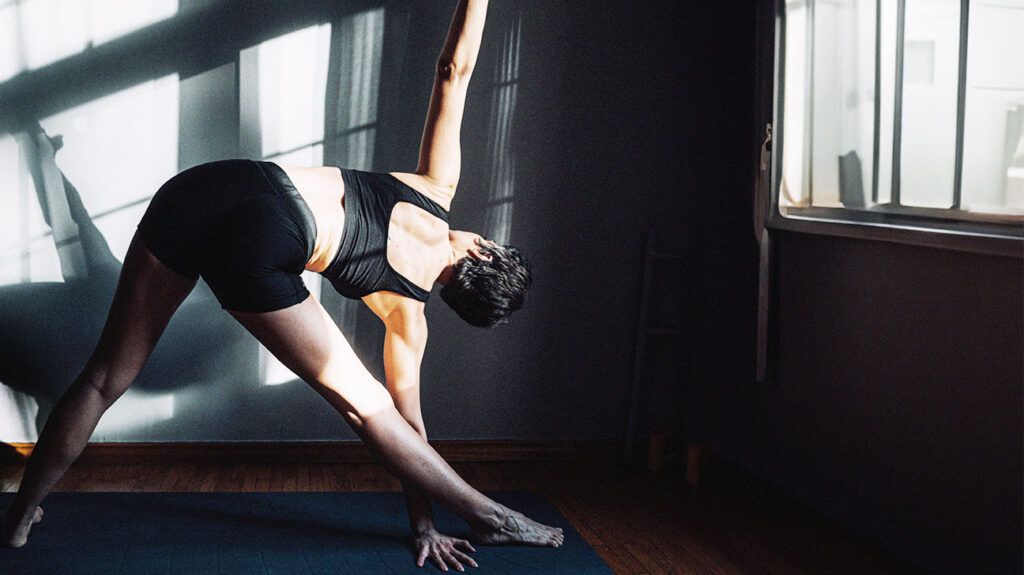
- Researchers report that weekly yoga practice improved back pain in a small group of study participants.
- Muscular electrical activity in the lower back, which is associated with back pain, also improved.
- The findings indicate that yoga could be an effective therapy for chronic low back pain, but more research is needed.
Yoga could be an effective treatment for chronic lower back pain, according to new research.
A
Each week participants completed a series of yoga “asanas” — poses designed to move and stretch the body. Researchers also utilized electromyography, which measures electrical activity in muscles, to provide further evidence for their findings.
“The main takeaway from this research is that there is a statistically significant difference in the improvement in pain for the females in the study with non-specific low back pain,” Dr. Hanan Saleh, a spine medicine specialist with the Cleveland Clinic who wasn’t affiliated with the study, told Medical News Today.
Experts say the research lends further evidence to the effectiveness of yoga as a treatment for low back pain.
“Relieving back pain still remains a challenge. Asanas can become an addition to the range of possibilities in managing this disorder,” Dr. Alessandro de Sire, an author of the study and a professor of physical medicine and rehabilitation at Università degli Studi “Magna Graecia” di Catanzaro in Italy, told Medical News Today.
De Sire and his team recruited 21 women, all of them between the ages of 18 and 40, to take part in the research.
Eleven of the women were “healthy” individuals while the other 10 reported having a condition known as
All participants took part in a four-week yoga program consisting of two sessions per week.
During the first week, the sessions were conducted in person while the remainder were conducted remotely using a “tele-yoga” approach.
Each session included 30 asanas in standing, seated, and supine positions. Researchers continued to follow up with participants for four additional weeks after the therapy.
The primary goal of the study was to see how the yoga practice affected pain levels. In order to track this, both groups did a pain assessment at baseline using the 10-point visual analogue scale (VAS) for pain.
If you’ve ever been to the doctor’s office and they’ve asked you to point at a series of faces from smiling to crying to show how you feel, then you’re familiar with the VAS system. It’s a simple way for anyone to indicate their general pain level.
Women with NSLBP had an average pain level of 6.8 at baseline, indicating moderate to severe pain, but after the weekly yoga intervention that score decreased by more than half to 3.3, indicating low to moderate pain.
Researchers also used electromyography to verify their findings about pain.
By attaching electrodes to the lower back region of participants, they were able to measure electrical activity within the muscles of the lower back. Certain patterns of electrical activity in the region are known to be associated with low back pain.
Specifically, scientists looked at the
During flexion, the muscles of the lower back are engaged. However, at a certain point in the flexion, the muscles actually begin to relax again.
How much the muscles are engaged or relaxed during this process can be measured through electromyography and given a numerical value. A higher score indicates better muscle relaxation while a lower one indicates more muscle tension. So, lower scores tend to be associated with the risk of low back pain.
In this study, women with back pain had a baseline flexion-relaxation score of 5.12. After the yoga sessions this number increased to 9.49, indicating improvements to muscle relaxation and electrical activity during flexion.
Although the study was small and relatively short, the authors say they are optimistic about their findings.
Using data forecasting technique known as prophet modeling, the team found that the yoga program would continue to provide benefit over a longer period of time, based on their four-week trial results.
“Clearly, further studies are needed to delve into the long-term results of this asanas approach. However, the prophet model suggests that the results can be maintained, through a relatively simple, openly safe intervention,” said de Sire.
Additionally, the research also raises the profile of so-called “tele-yoga.” Like other forms of telehealth that have
Yoga is an ancient practice that combines breathing, meditation, and physical poses known as asanas. Researchers have increasingly taken an interest in the practice to see how it affects the body and mind in a way that can be proven scientifically.
While there are plenty of personal, anecdotal reports of the benefits of yoga practice, here are some of the benefits of yoga backed by science:
- Improving flexibility
- Relieving stress
- Improving balance
- Building strength
- Promoting better posture
“In my clinical experience, yes, [yoga] has been helpful for patients. Of course, it doesn’t help everyone, but I also haven’t seen it hurt anyone. Overall, it is a safe treatment option, and I always encourage my patients to pursue conservative treatment options as tolerated,” said Saleh.
“Generally speaking, some exercises that may be helpful can include the knee-to-chest exercise, piriformis and hamstring stretches, and my favorite ‒ core strengthening. The stronger our core, the more supported our spine is. Of course, not everyone should get the same set of exercises, which is why we focus heavily on physical therapy and personalize exercises based on the diagnosis,” she said.